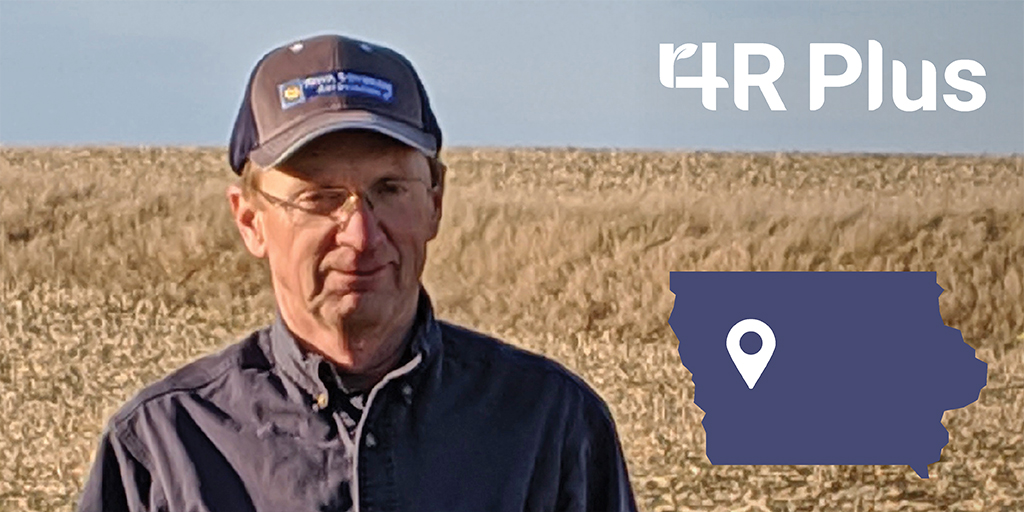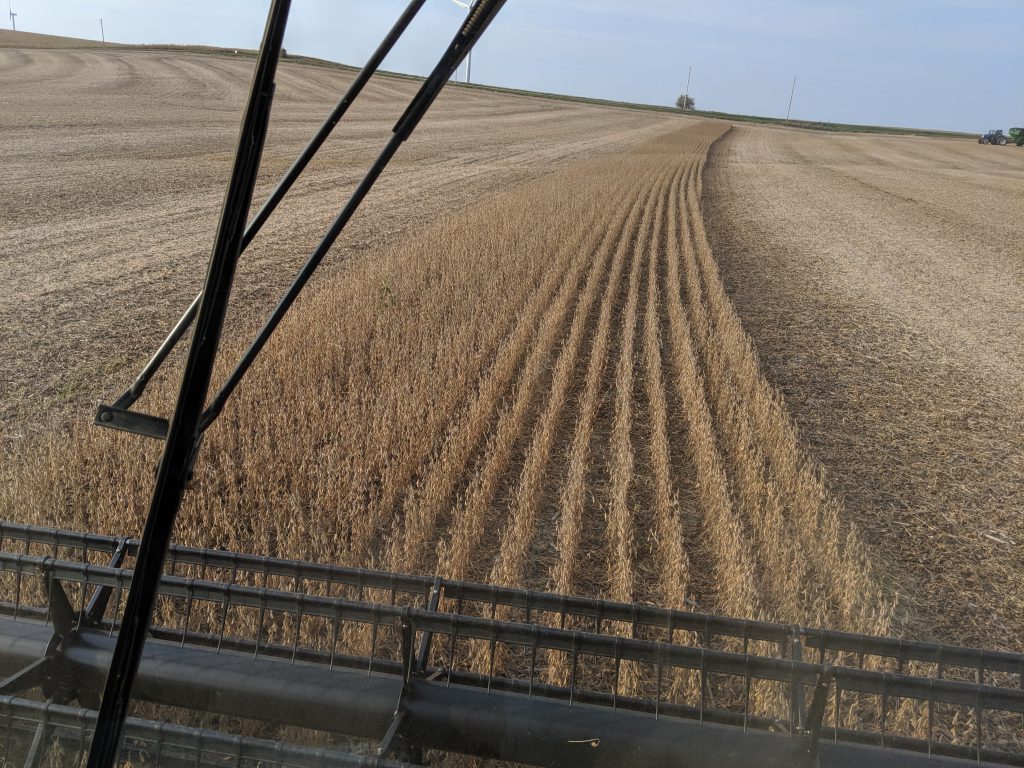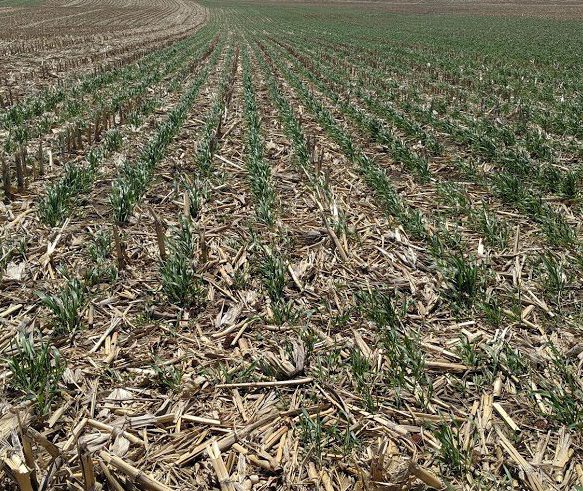
Improving soils is a long-term commitment according to Audubon County farmer Doug Carter. He missed the very worst of the derecho, but was in the bull’s eye of severe drought for much of the growing season. Both ultimately impacted his yields, but he believes 4R Plus practices helped limit the yield losses from these extreme weather events.
Carter is thankful the crops started out with decent soil moisture, which promoted root development, helping the crops withstand the drought conditions as the season progressed. “The roots grew deep early, and we had good subsoil moisture, so that gave me respectable yields, and no-till and cover crops helped that early season moisture stay in the soil,” he said.

Overall, corn yields were down around 15% and beans were down about 20% from his five-year average. Soybean yields took an additional hit from herbicide injury on a couple of farms.
His farms missed the very worst of the derecho. “Root structure made a difference; the better the soil, the better the corn handled things,” he said. “On the farm where the corn was flattened, I’ve not had a cover crop. Some of my other fields didn’t go down as bad.”
The flattened field was combined first. “There were some spots you couldn’t pick the corn up unless you did it by hand, so we went cross row and think it did a much better job lifting it up,” Carter said. “But I still think the downed corn took a 40 bu. per acre hit from the derecho. I kept telling myself it was going to be fun when I got to some standing corn.”
Like others, Carter is working out his management practices for severely downed corn. “We’re still of a mixed opinion whether we should till that field or just leave it, plant beans in the spring and try to kill the volunteer corn,” he said.

He’s waiting for data on how cover crops impacted his soybean performance, but saw some favorable indicators over the summer “My cover crop manager with the Soil Health Partnership did an inspection this summer, and he was finding more pods in soybeans planted in cover crops. It looked like the beans were taller,” he said.
The weather has impacted the establishment of his cover crops in the past, but this fall he received timely rains and some warmth. “I’m happy with cover crop growth,” he said. “I know what I’m doing is improving my soil, and I’m looking at how 4R Plus practices are impacting the bottom line.”
He’s also using cover crops to hold soil on terraces that need to be rebuilt. “I have some old terraces that have filled up after years of doing their job,” he said. “Holes are developing. I’m going to smooth those out, seed with a cover crop, farm through them next year, and then plan to rebuild them in a year or two. We need the cover crops to hold that soil in place.”
Carter is keeping an open mind about how 4R Plus practices can improve his farm in the future and will expand acreage of cover crops when he’s comfortable with the system. “I went into my efforts to improve my soils and crops with an open mind, and I still have one. I’m always trying to learn more,” he said.
Click here to ask Doug a question about his farming operation.
